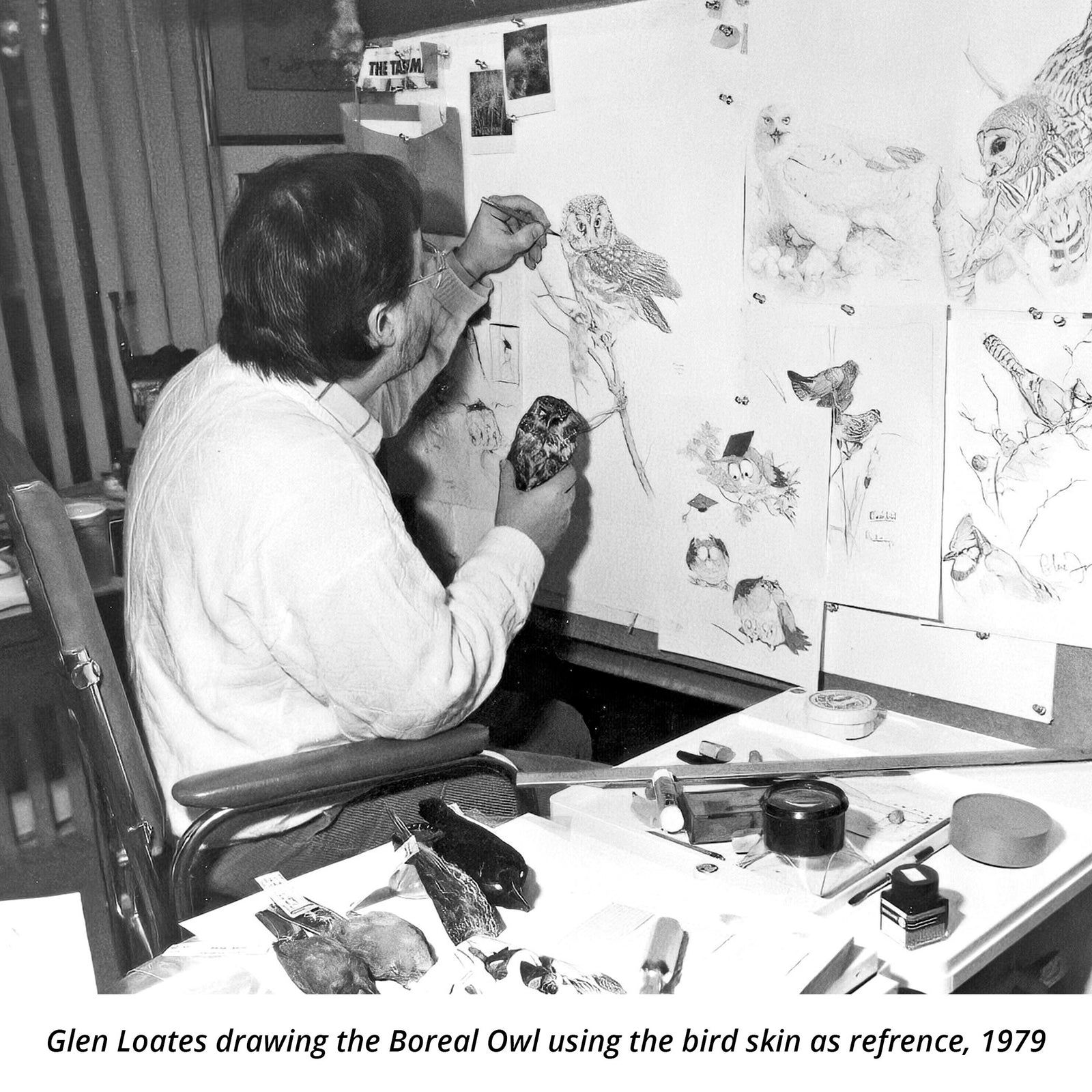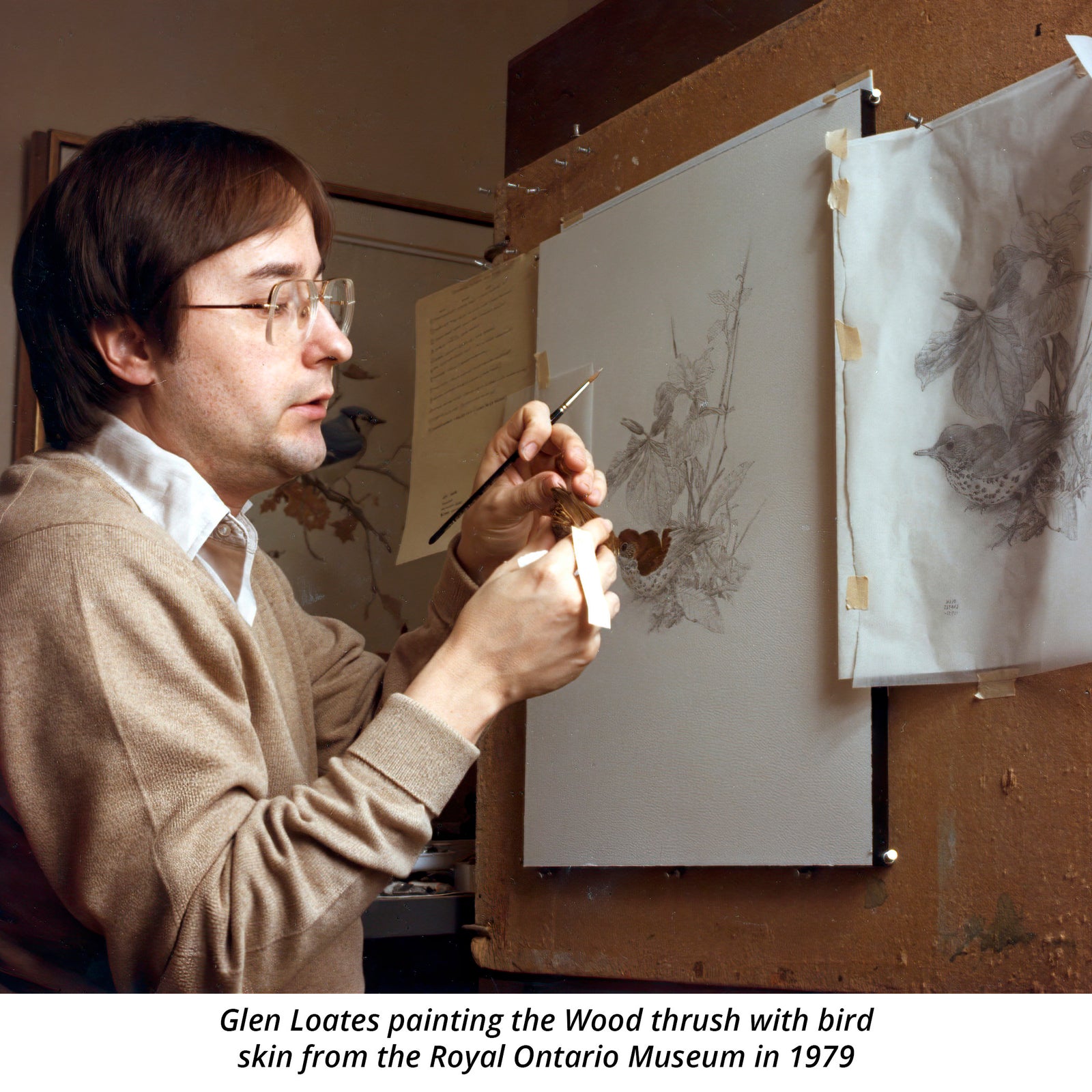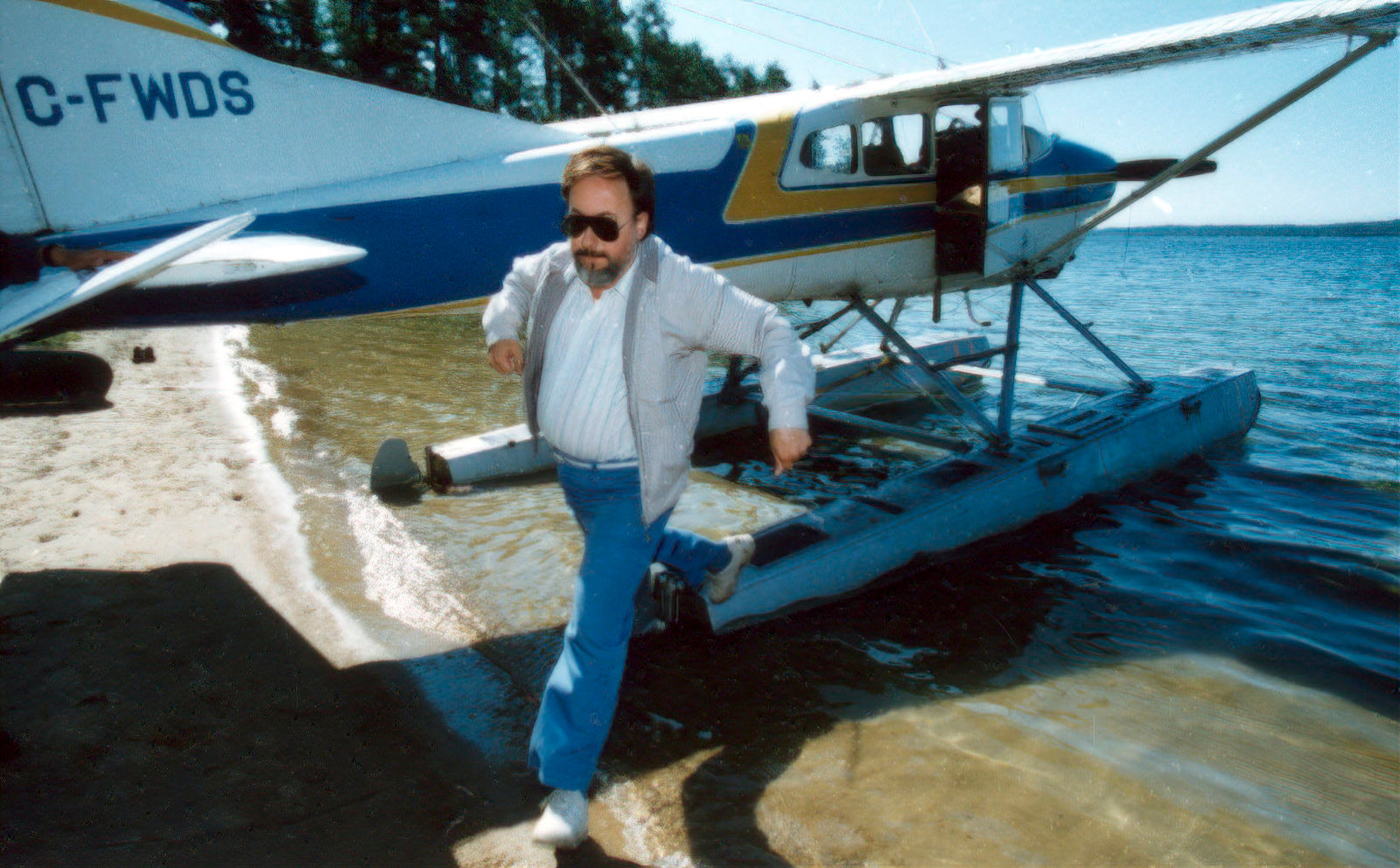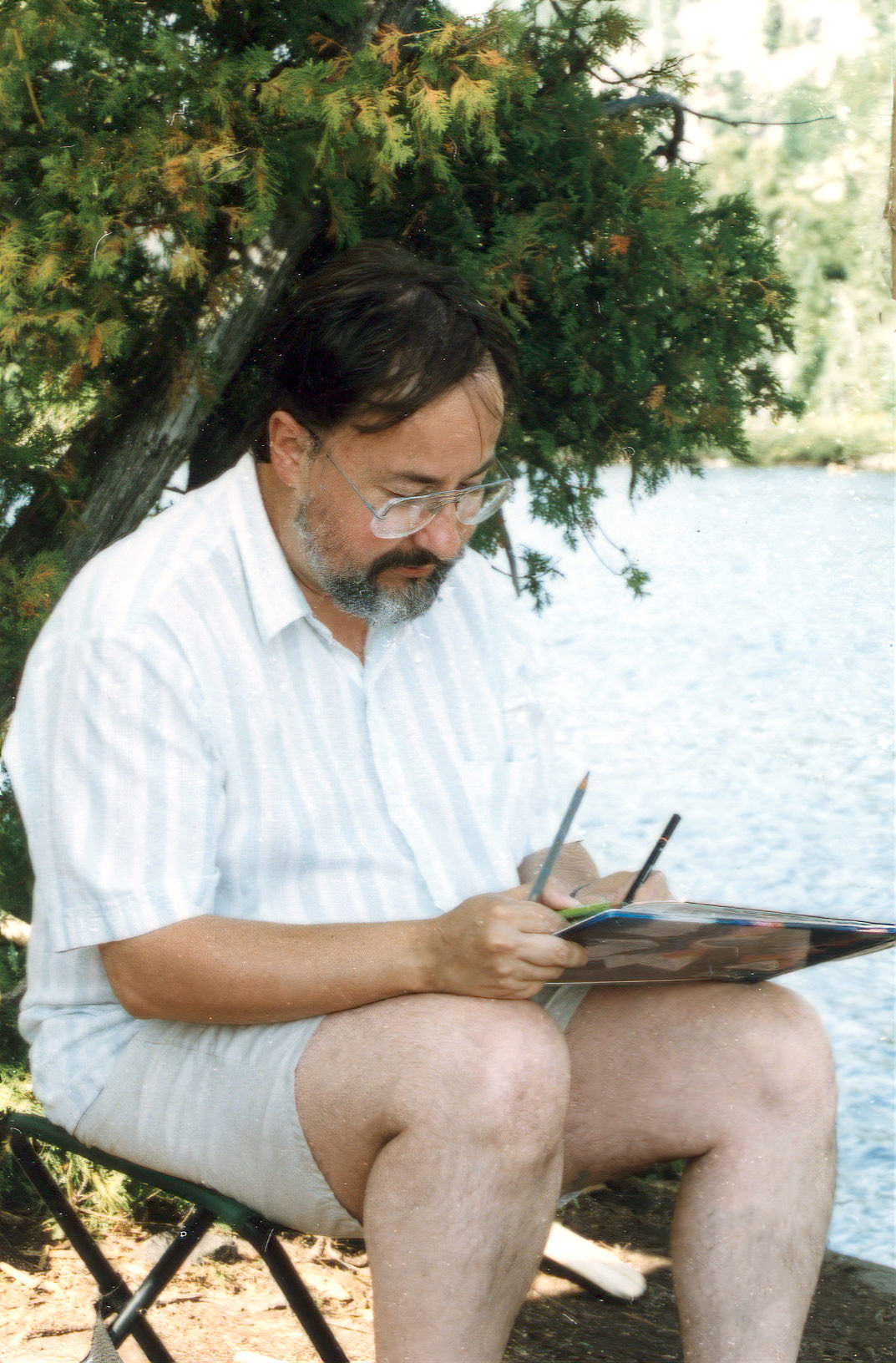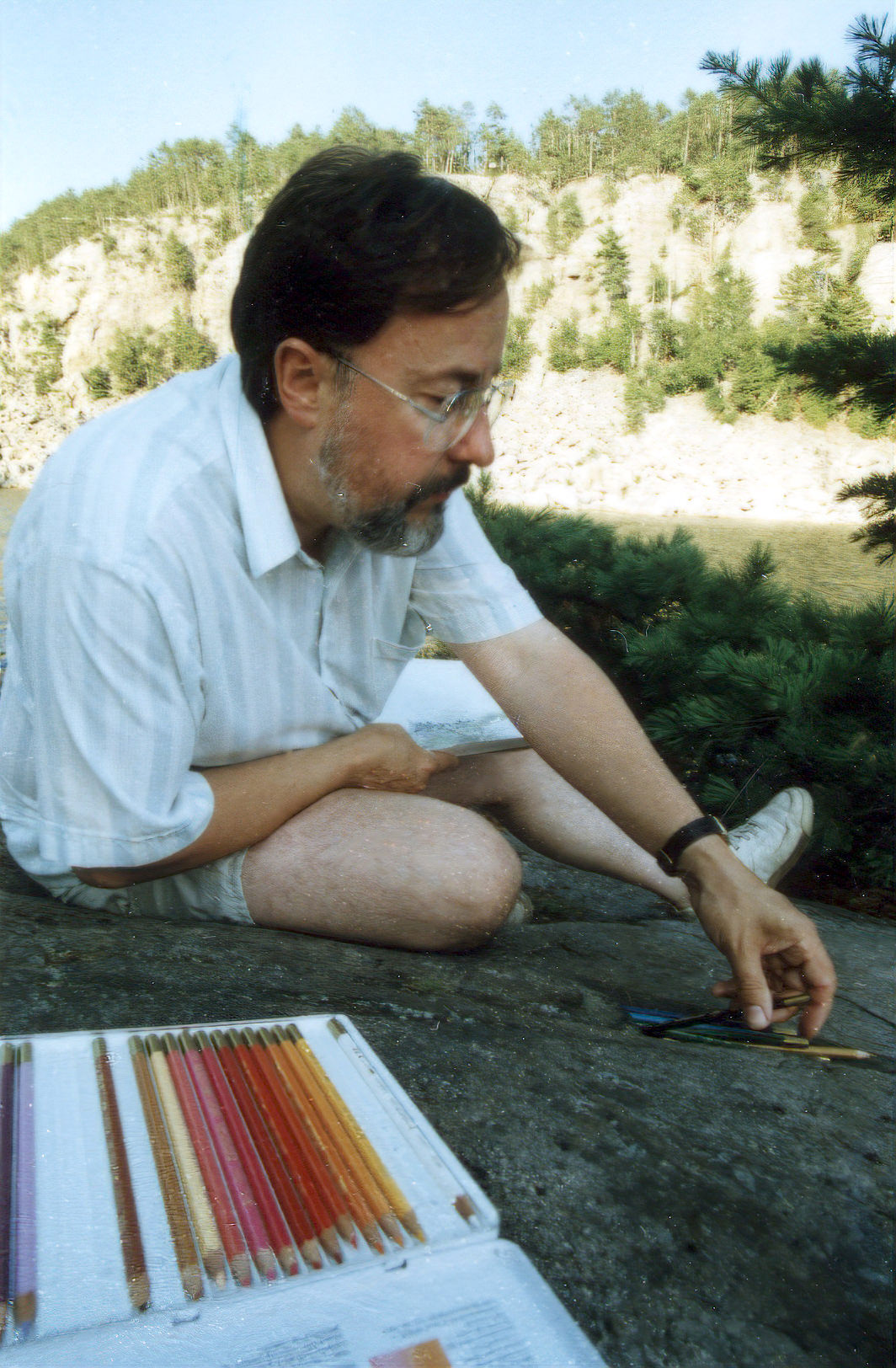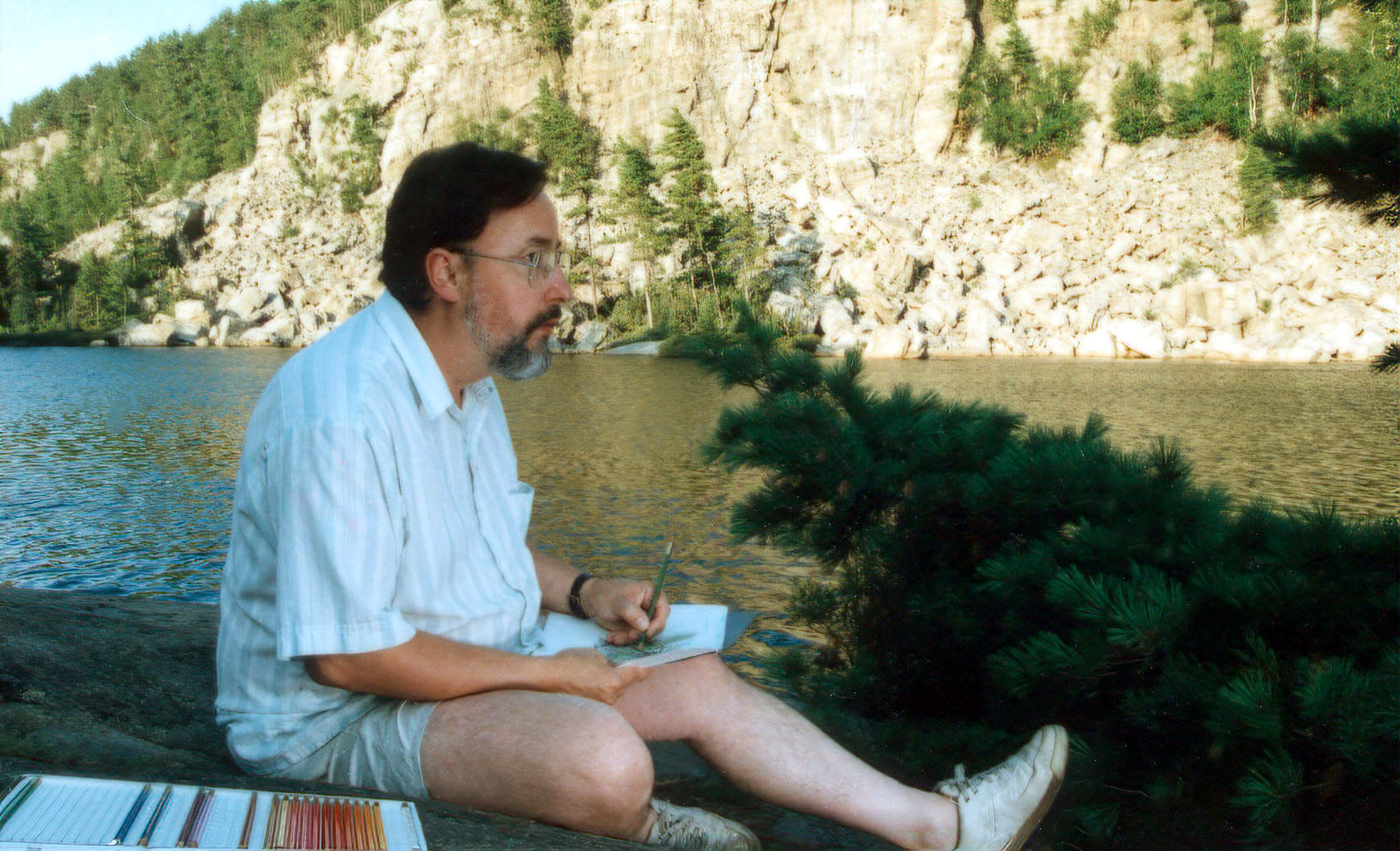~ Glen Loates
~ Glen Loates
All artists have their own reason for painting, but there is, I believe, a universal experience and understanding in the paintings of animals that everyone can share.
I have a great love for the beauty of creation, and attempt with the resources at hand to convey this personal feeling in my work. In all of my paintings, then, I have tried to capture a moment in the life of each subject.
If I can share with the viewer some enjoyment of my own experience with nature, I feel I will have accomplished more than I could have hoped for. Every artist has been influenced by others before him, and I am no exception.
Audubon, Fuertes, Thorburn, Rungius, Kuhn, and Lansdowne have been my sources. All of the afore-mentioned artists work in their own style, creating very different moods and feelings in their paintings.
At a certain point in development, the artist breaks away from his mentors and creates his own style. This is what I feel I have now accomplished and will continue to expand I have introduced more background into my recent work, while allowing the subject to stand out on its own, with the background remaining very detailed, as in the "Raccoon Family" and the "Pine Marten Pursuing Red Squirrel."
All artists have their own reason for painting, but there is, I believe, a universal experience and understanding in the paintings of animals that everyone can share.
I have a great love for the beauty of creation, and attempt with the resources at hand to convey this personal feeling in my work. In all of my paintings, then, I have tried to capture a moment in the life of each subject.
If I can share with the viewer some enjoyment of my own experience with nature, I feel I will have accomplished more than I could have hoped for. Every artist has been influenced by others before him, and I am no exception.
Audubon, Fuertes, Thorburn, Rungius, Kuhn, and Lansdowne have been my sources. All of the afore-mentioned artists work in their own style, creating very different moods and feelings in their paintings.
At a certain point in development, the artist breaks away from his mentors and creates his own style. This is what I feel I have now accomplished and will continue to expand I have introduced more background into my recent work, while allowing the subject to stand out on its own, with the background remaining very detailed, as in the "Raccoon Family" and the "Pine Marten Pursuing Red Squirrel."
Perhaps this is a good time to mention the medium I use. I prefer working with watercolor paints on paper and cloth. I stretch the watercolor paper by soaking it and then taping it to a piece of board. The cloth is used for larger paintings and is also stretched to a wood frame rather than board. The cloth is soaked with water, and a thin layer of gesso is applied to the surface to prevent the paint from being absorbed into the cloth. This gesso coating also gives a much more brilliant effect to the colors. Washes are applied while the surface is still wet, allowing me to paint a soft vignette for the background. Before starting a painting, I complete the composition using the field notes I have collected. Some paintings take only a week, while others may take several months to execute. Tubed watercolors and fine sable brushes are used to complete the painting. The subjects are not always life-size, for obvious reasons.
I start each picture by first painting the eye of a subject, then work towards completion, painting the background detail last. With botanical subjects, I paint the blossoms first. The plant and background material are painted on the spot with watercolors. This work is then taken back to the studio along with some of the foliage for reference. I have on occasion used photographs as a reference only, taking a little here and there to create, with the help of my own on-the-spot field sketches, a final work As many as forty-five rough pencil sketches have been done of a single animal, in an attempt to capture all of its movements and anatomy. For the details of feathers and fur, I always use skins and pelts loaned to me by the Royal Ontario Museum. The layman should be able to look at a good animal painting and feel surprised and excited, be convinced of its anatomical structure, and be able to gain a familiarity with its habitat, as well as a love for the subject itself. Animal paintings should not be considered merely illustrations or studies; rather, they are truly creations of art.
Perhaps this is a good time to mention the medium I use. I prefer working with watercolor paints on paper and cloth. I stretch the watercolor paper by soaking it and then taping it to a piece of board. The cloth is used for larger paintings and is also stretched to a wood frame rather than board. The cloth is soaked with water, and a thin layer of gesso is applied to the surface to prevent the paint from being absorbed into the cloth. This gesso coating also gives a much more brilliant effect to the colors. Washes are applied while the surface is still wet, allowing me to paint a soft vignette for the background. Before starting a painting, I complete the composition using the field notes I have collected. Some paintings take only a week, while others may take several months to execute. Tubed watercolors and fine sable brushes are used to complete the painting. The subjects are not always life-size, for obvious reasons.
I start each picture by first painting the eye of a subject, then work towards completion, painting the background detail last. With botanical subjects, I paint the blossoms first. The plant and background material are painted on the spot with watercolors. This work is then taken back to the studio along with some of the foliage for reference. I have on occasion used photographs as a reference only, taking a little here and there to create, with the help of my own on-the-spot field sketches, a final work As many as forty-five rough pencil sketches have been done of a single animal, in an attempt to capture all of its movements and anatomy. For the details of feathers and fur, I always use skins and pelts loaned to me by the Royal Ontario Museum. The layman should be able to look at a good animal painting and feel surprised and excited, be convinced of its anatomical structure, and be able to gain a familiarity with its habitat, as well as a love for the subject itself. Animal paintings should not be considered merely illustrations or studies; rather, they are truly creations of art.
I sketch on site as much as possible. I bring rough sketches back to the studio along with branches, plants, and whatever else I might need to finish a painting. Plants are dug up and placed in containers along with the dried leaves or mosses that accompany them.
When I have finished painting from this material, I return them to my garden or the location from where they were collected. Also, when on site in the field or zoological park, I will sketch ideas, render them very quickly, make color notes, and take photographs for reference. I work on one painting at a time.
I find music relaxes me while I work. Usually, I listen to classical compositions or movie scores. Depending on my mood, this music stimulates my imagination and satisfies my creative visualizations. For instance, when painting the battle between the giant squid and sperm whale, I played the score from the movie, The Deep, and symphony La Mere over and over again.
Over the years, there are two watercolors I've done that appeal to me the most: "Blue Jays at My Feeder" and "Canada Lynx" (as depicted below).
I have great affection for the blue jay. When I was nine, it was the first bird I ever tried to sketch. With the completion of "Blue Jays at My Feeder," I can finally say I have done them justice. My friend, John Wilson, made and installed the feeder in my backyard years ago. These beautiful members of the jay family have been my neighbors ever since!
My other favorite painting, "Canada Lynx," depicts an elusive wild cat of the northern forests. The name "lynx" is derived from the Greek word, which means, "to see," and gives rise to the common expression "lynx-eyed." I chose to portray the lynx having just missed catching a ruffled-grouse. The twigs, bows, and branches snapped and cracked as the cat lost its balance. Rather than painting the whole grouse into the composition, I decided to paint only the feathers, giving the viewer evidence of the grouse having been there.
I sketch on site as much as possible. I bring rough sketches back to the studio along with branches, plants, and whatever else I might need to finish a painting. Plants are dug up and placed in containers along with the dried leaves or mosses that accompany them.
When I have finished painting from this material, I return them to my garden or the location from where they were collected. Also, when on site in the field or zoological park, I will sketch ideas, render them very quickly, make color notes, and take photographs for reference. I work on one painting at a time.
I find music relaxes me while I work. Usually, I listen to classical compositions or movie scores. Depending on my mood, this music stimulates my imagination and satisfies my creative visualizations. For instance, when painting the battle between the giant squid and sperm whale, I played the score from the movie, The Deep, and symphony La Mere over and over again.
Over the years, there are two watercolors I've done that appeal to me the most: "Blue Jays at My Feeder" and "Canada Lynx" (as depicted below).
I have great affection for the blue jay. When I was nine, it was the first bird I ever tried to sketch. With the completion of "Blue Jays at My Feeder," I can finally say I have done them justice. My friend, John Wilson, made and installed the feeder in my backyard years ago. These beautiful members of the jay family have been my neighbors ever since!
My other favorite painting, "Canada Lynx," depicts an elusive wild cat of the northern forests. The name "lynx" is derived from the Greek word, which means, "to see," and gives rise to the common expression "lynx-eyed." I chose to portray the lynx having just missed catching a ruffled-grouse. The twigs, bows, and branches snapped and cracked as the cat lost its balance. Rather than painting the whole grouse into the composition, I decided to paint only the feathers, giving the viewer evidence of the grouse having been there.
-1985-
-1985-
